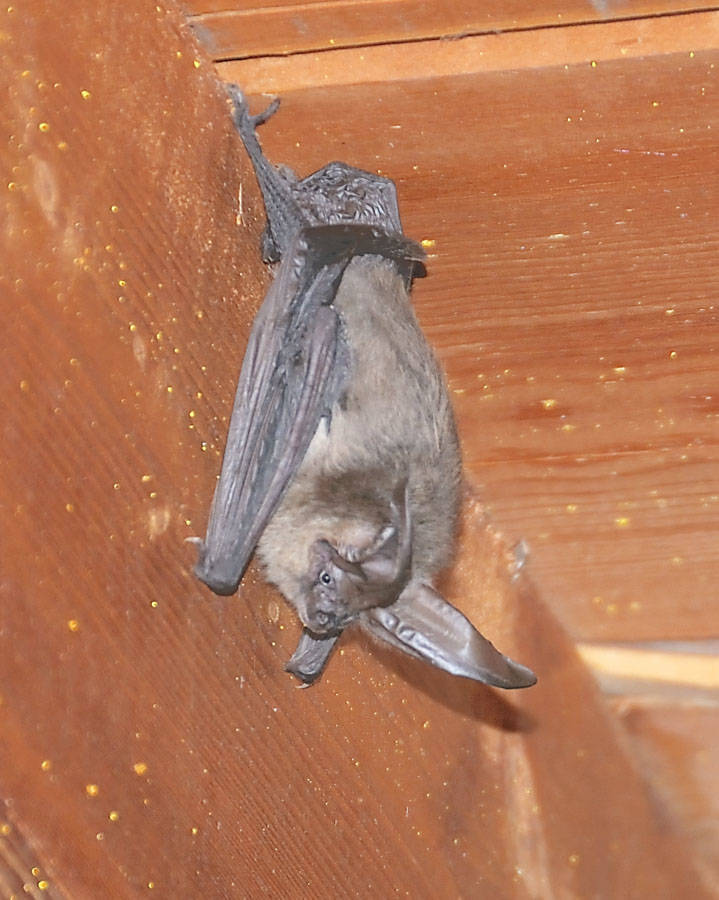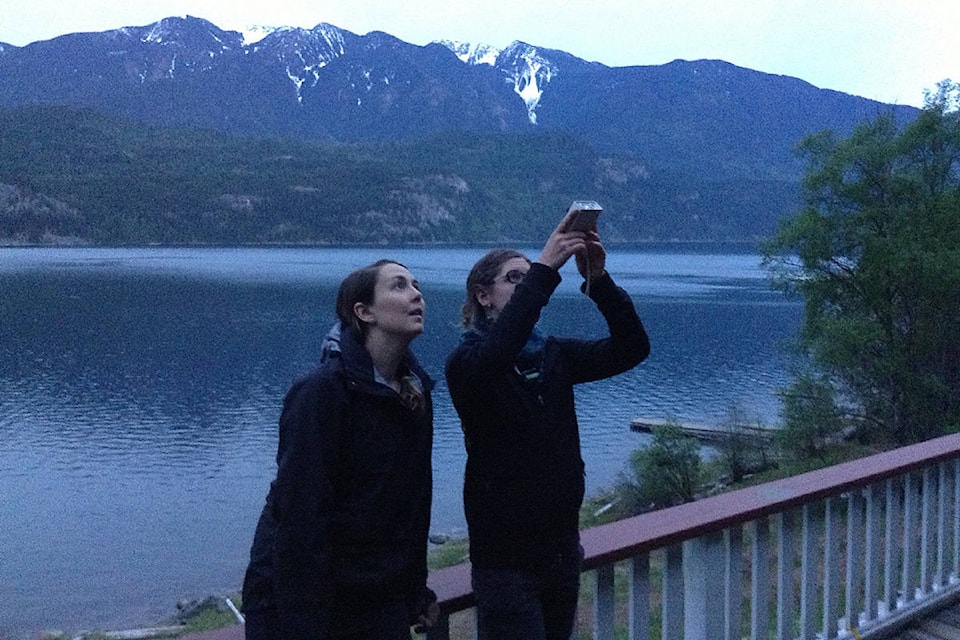Residents are being asked to venture into old abandoned barns, web-strewn attics, and other local roost sites to help the Community Bat Projects of BC (BCCBP) conduct their annual census.
“Bat counts are a wonderful way for residents to get involved in collecting important scientific information,” said biologist Ashleigh Ballerina, coordinator of the Skeena Community Bat Program. “No special skills are needed, you can be any age, and you can relax in a deck chair while counting.”
The count collects baseline data on bat populations across the province, which has increased in urgency since the White Nose Syndrome fungal disease decimated eastern North American numbers.
“White Nose Syndrome is estimated to have killed more than seven million bats since it was first discovered in eastern North America a decade ago,” said Mandy Kellner, provincial coordinator of BCCBP.
“In March 2016, the disease was detected just east of Seattle, and has now spread within Washington State. This has greatly increased our urgency to understand bat populations in BC. We need the public’s help to census local bat populations - we never known when it is our last year to obtain population estimates before White Nose Syndrome causes widespread declines in western North America.”
READ MORE: Vacationers urged to check for stowaway bats that could carry deadly disease
About half of 16 species of bat in BC are considered vulnerable or threatened, according to BCCBP. Historically bats have gotten a bad societal rap, from their association to blood-sucking vampires to their incorrect classification as a species of rodent. In actuality, these creatures are extremely helpful in cutting down flying insect populations, namely mosquitoes, and can eat more than their body weight in one night.
“We know relatively little about bats in the Skeena, including basic information on population numbers,” said Ballevona. “This information will be extremely valuable, particularly if it is collected annually. If people want to get involved but don’t have a roost site on their property, we will try to match them with a roost site nearby.”
Volunteers can help with the count by waiting outside a known roost site, like a bat-house, barn, bridge or attic, and count the bats that fly out at twilight. Then, they record the final number along with weather conditions and submit. The counts are done once or twice between June 1-21 before the pups are born, and then again between July 11 and August 5 when the pups are flying.
To find out more about bat counts, or to get assistance dealing with bat issues, visit www.bcbats.ca or call 1-855-9BC-BATS.
brittany@terracestandard.com
Like us on Facebook and follow us on Twitter


